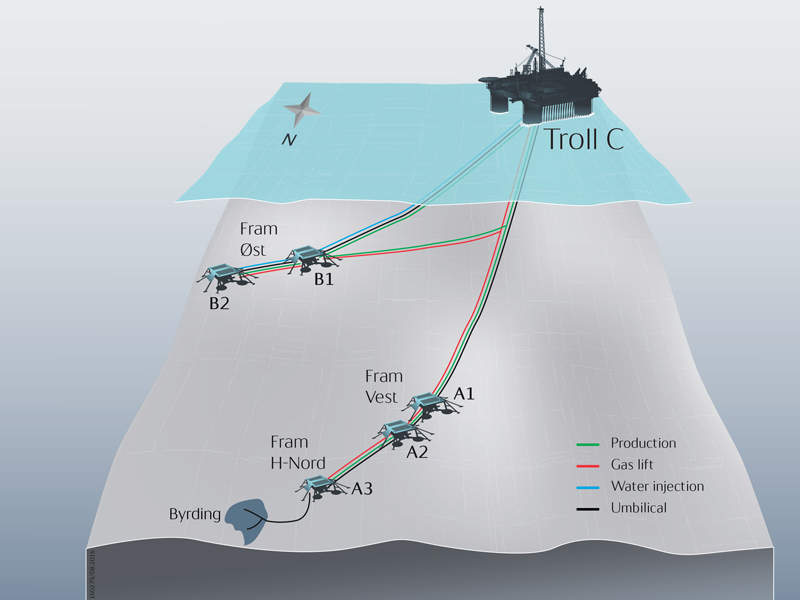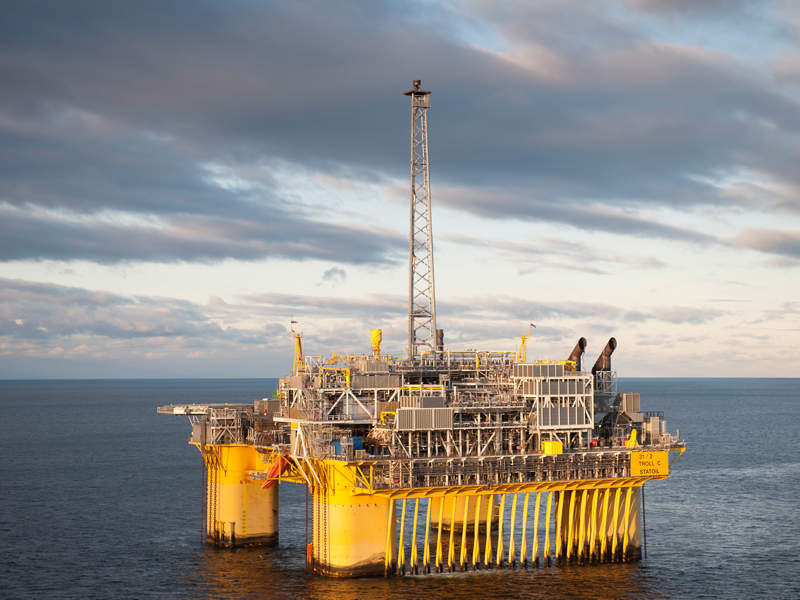
Byrding is an oil and gas field located in production licence 090B in block 35/11 in the North Sea. The field is situated 3.8km north of the Fram field, and 27km south-west of the Gjøa field at a water depth of 360m.
The field was developed by Statoil in partnership with licensees that include Idemitsu (15%) and Engie (15%). Statoil’s share in the development increased from 45% to 70% by acquiring Wintershall Norge’s 25% interest in October 2016.
A plan for the development and operation of the field was submitted to the Norwegian Petroleum Directorate (NPD) on 19 August 2016 after the field development concept was selected at the beginning of 2015. It was approved by the authorities in January 2017.
Production from the field started in July 2017.
The Byrding field was earlier known as Astero and draws inspiration for its current name from a Viking ship that has high sides and is slightly rounded. The field development was delayed for more than a decade and the final cost of development came to Nkr1bn ($121.35m), a significant reduction from the earlier estimate of Nkr3.5bn ($424.74m).
Discovery and reserves
The Byrding prospect was discovered by Norsk Hydro in 2005 by drilling well 35/11-13 and was confirmed in 2006 by drilling well 35/11-14. Additional hydrocarbons were also confirmed in 2006 when test well 35/11-14S confirmed the presence of oil and gas in a new section of the prospect.
The Transocean Winner floating rig was used to drill the new well to a depth of 3,253m in 2006. The newly obtained data helped in planning for a new development in the area, adjacent to the Troll field.
The field’s reservoir lies at a depth of 3,100m and comprises oil with a gas cap present in the Upper Jurassic sandstones. The small field has estimated recoverable resources of approximately 1.8 million standard cubic metres (MSm³) of oil equivalents or 11 million barrels of oil equivalent (Mboe). The field is expected to produce 8,000boe a day during its peak period in 2017 and 2018.
Byrding oil and gas field development details
The field was developed as a tie-back to the Fram field using existing infrastructure. A two-branch multilateral well was drilled from an available slot on the subsea template on Fram H-North.
Recovered hydrocarbons are sent for partial processing to Troll C using the Fram infrastructure. Processed oil is transferred to Mongstad, north of Bergen, via pipelines, whereas gas from the field is transmitted to the Kollsnes terminal, south of Mongstad, through Troll A.
The two-branch well was drilled for a distance of approximately 7km, with the initial distance being shared by the two branches.
Utilisation of the existing equipment reduced the cost of development substantially and made the project profitable, even at low oil prices. Production from the field is expected to continue for a period of up to ten years.
Fram field details
Fram is a Statoil-operated oil field lying in Block 35/11 in the North Sea, approximately 120km west of Florø field. The field comprises Fram West and Fram East fields that are situated 20km north of the Troll field, at a water depth of 350m.
Development of both the fields comprised subsea installation tied-back to the Troll C platform using pipelines. Hydrocarbons produced from the fields are processed on the Troll C platform. Production from the Fram West field commenced on 2 October 2003 and was followed by Fram East on 22 April 2005.




